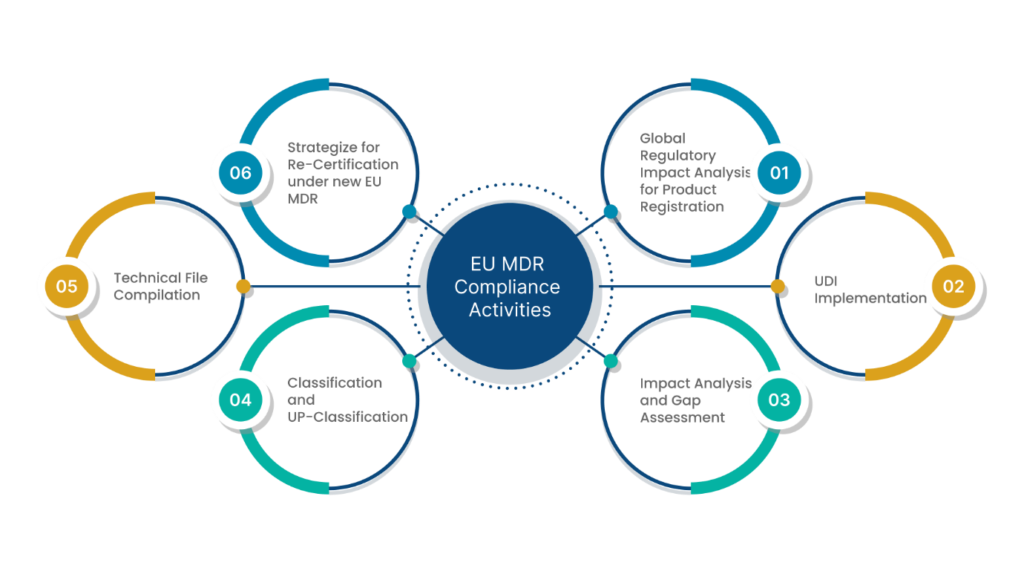Navigating the Challenges of EU MDR: Rising Costs and Stricter Regulations for Medical Device Companies

The European Union’s Medical Device Regulation (MDR) represents a significant regulatory advancement aimed at improving patient safety and transparency. However, it also brings considerable challenges for medical device manufacturers, particularly in terms of cost, time, and market access.
1. Stricter Clinical Evidence Requirements
The MDR introduces much stricter requirements for clinical evidence, especially for high-risk devices. This means manufacturers must provide more robust clinical evaluations than what was required under the previous Medical Devices Directive (MDD).
- Devices that were previously exempt under the old system must now undergo new clinical studies, adding both time and cost to the approval process.
This shift places a heavy burden on small and medium-sized manufacturers, who may lack the resources to meet these heightened demands.
2. Device Reclassification
Many devices that were previously classified as Class I, including Software as a Medical Device (SaMD), are now being reclassified under the MDR, often into higher-risk categories like Class IIa or above.
- This reclassification brings stricter regulatory pathways, including more detailed technical documentation and greater involvement with Notified Bodies.
Manufacturers face increased costs for testing, certification, and clinical investigations, which is particularly challenging for smaller companies.
3. Notified Body Capacity and Delays
Notified Bodies play a crucial role in assessing device conformity under the MDR. However, there are fewer Notified Bodies available, creating bottlenecks and delays in the certification process.
- These delays extend the time manufacturers need to bring products to market, creating uncertainty and complicating product launches.
Small manufacturers may struggle to get the attention they need from Notified Bodies, as larger companies often dominate these limited resources.
4. Rising Regulatory Costs
The MDR’s expanded requirements lead to higher regulatory costs across the board. Manufacturers face longer timelines and more complex clinical evaluations, testing, and documentation.
- Ongoing compliance with post-market surveillance and vigilance reporting adds to operational expenses, making it more difficult for smaller companies and startups to absorb these costs, further increasing entry barriers.
5. Post-Market Surveillance and Vigilance
The MDR imposes new obligations for post-market surveillance (PMS), requiring manufacturers to submit Periodic Safety Update Reports (PSURs) and respond to real-world data after a product has launched.
- These increased surveillance responsibilities add significant workload and cost, particularly for smaller manufacturers.
6. Transition Timelines and Compliance Deadlines
Although the MDR officially took effect in May 2021, the transition period extends until December 2028. However, many manufacturers face tight deadlines to update technical documentation, conduct clinical evaluations, and complete the certification process.
- Failure to meet these deadlines could result in lost market access or the withdrawal of products from the EU market.
7. Enhanced Data and Documentation Requirements
The MDR demands more detailed and structured technical documentation, including comprehensive descriptions of devices, risk management files, clinical data, and post-market surveillance plans.
- The EUDAMED database requires manufacturers to register detailed product information and continuously monitor compliance across different markets, creating administrative burdens and necessitating new systems to handle the increased complexity.
Conclusion
While the European Union Medical Device Regulation (EU MDR) aims to enhance patient safety and transparency, it places substantial demands on manufacturers in terms of cost, reclassification, and certification delays. These challenges are particularly tough for smaller companies, who must carefully allocate resources and adjust their strategies to comply with the new regulations. This could potentially slow down innovation and alter the competitive landscape in the medical device industry.
Note: IndiBlogHub features both user-submitted and editorial content. We do not verify third-party contributions. Read our Disclaimer and Privacy Policyfor details.



